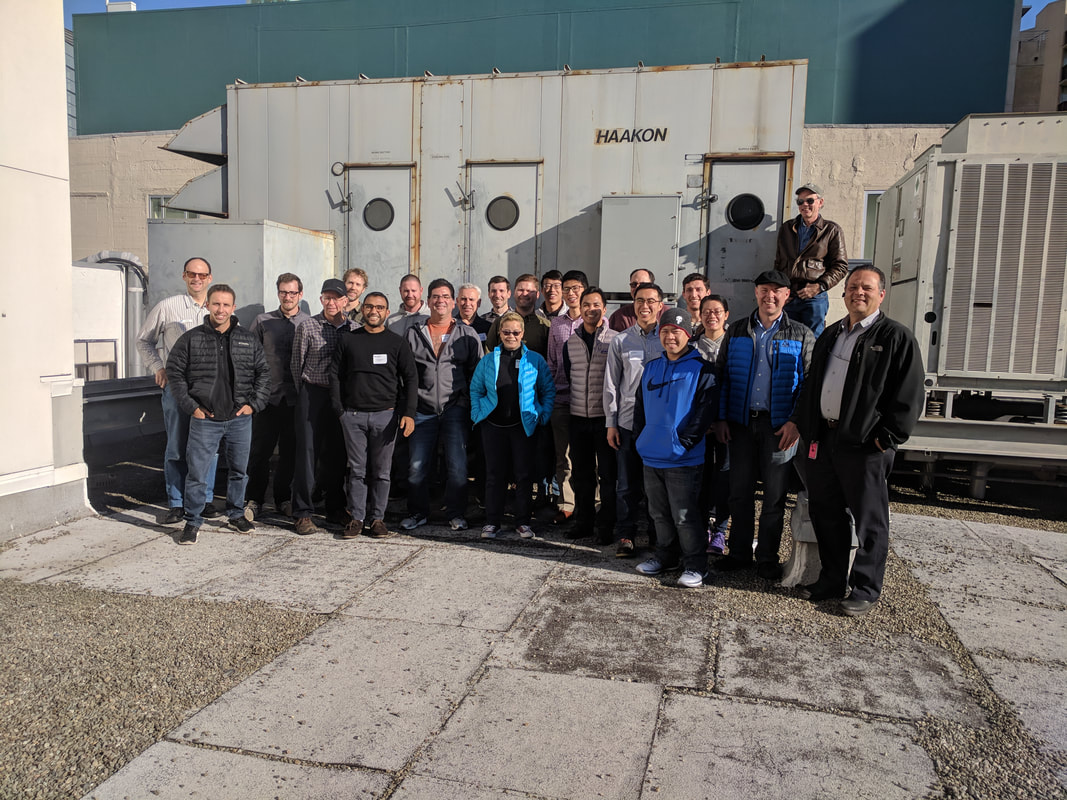Existing Building Commissioning Workshop Series 13 Materials
|
As indicated on the main page, the true source for the materials for the existing building commissioning class workshop is the FTP site Ryan maintains. If you need information regarding how to access it, you should contact him via e-mail at [email protected]. It would be desirable to include the words "EBCx Workshop Series 13 Materials FTP Site Access" in the subject line to catch his attention.
The materials below are the materials I provide for the portions of the workshop that I teach. I am going to keep placing them here so that you can access them before class if you want and also to make it easy for Ryan to pull them back for the FTP site. |
If someone is looking for materials from a session prior to Series 13, Ryan should probably be your first contact (see above for his e-mail) since he has everything vs. just the information I contribute. But you should also feel free to get in touch with me if you are looking specifically for something that I provided and I will see if I can find it in my archives.
Note that for the follow-up materials, I generally put a Read Me file in with the other files to explain what each of them is.
Note that for the follow-up materials, I generally put a Read Me file in with the other files to explain what each of them is.
Session 1
| Session 1 Materials (series_13_session_1_ds_materials.zip) |
Session 2
|
| ||||
Session 3
|
| ||||
Sessions 4 and 5
|
Lecture Materials
Byers Hall Photographs
These are all of the photographs I took during the time I was on site. I tried to select names for the pictures that described what they were but if you have questions, just e-mail me.
Boiler Firing Cycle
This is an extremely moving and exiting video I took that shows how the boiler linkages move during a firing cycle. You'll laugh, you'll cry, it will change your life.
I started it right at the end of the purge cycle, so the video starts with the system moving from full air flow with no gas to purge the boiler. If you listen to the audio, you can hear the various stages of the firing cycle. The timing was as follows:
There are a couple of blog posts that look at the energy implications of boiler short cycling if you want to understand how to assess an issue like this.
I also have videos of the cooling tower flow issue but I am going to put them up on a separate page I am developing to highlight cooling tower flow problems since I think they are not well recognized. I will assess the performance implications of all of this in an upcoming blog post. |
Lab Materials
Findings List
The file below is the findings list I put together during the time I was on site at Byers Hall. I plan to develop some of the information for the condenser water pump optimization and cooling tower flow issue and put it up in a blog post, so you might want to watch for that.
Equipment Information
The next file is information I pulled of the internet regarding the CW pump performance, the cooling towers, the flow control valves on the chillers, and the boilers along with the balancing valve information Ryan pulled back.
The boiler information includes some detailed information about the NOx control methodology that the boilers use; i.e. the duct and control apparatus that injected flue gas into the combustion air box. Since the flue as is inert in terms of the combustion process, injecting it into the combustion air will not impact the fuel air ratio. But injecting the flue gas will increase the mass flow through the combustion process and thus, cool the flame (the flame is in the 2,500°F range or higher, so at 400 - 600°F, the flue gasses are relatively cool). The cooler flame reduces the amount of NOx generated, but also impacts over-all boiler efficiency a bit in a negative way.
Miscellaneous Followup Materials
This file contains all of the other follow-up information. Mostly it is related to the lecture session at the PEC, including additional information about the flywheel test I used as an example and information from Sporlan about the refrigeration cycle and some of the components that make it work including the expansion valves and hot gas regulators. There is also a copy of the psych chart we developed in the lab session.
I also included the presentation on the Perfect Economizer that I mentioned when Ryan shared and the economizer diagnostic in the UT. It provides a bit more insight into how the diagnostic lines are created and also illustrates how the economizer will perform in a more extreme climate than San Francisco, where you may encounter conditions that drive you to minimum outdoor air in extremely cold weather and thus require preheat.
| ||||||||||||||||||||
Session 6
|
| ||||||||||||
Session 8
Note that the Followup Materials zip file includes a Read Me file that describes the other files.
|
| ||||
Session 9
Note that the Followup Materials zip file includes a Read Me file that describes the other files.
|
| ||||
Session 10
Note that the Followup Materials zip file includes a Read Me file that describes the other files. It also includes Tony's slides.
|
| ||||
Session 11
|
These are the materials I used in the lab session, including a READ ME file describing each of the files.
|
| ||

